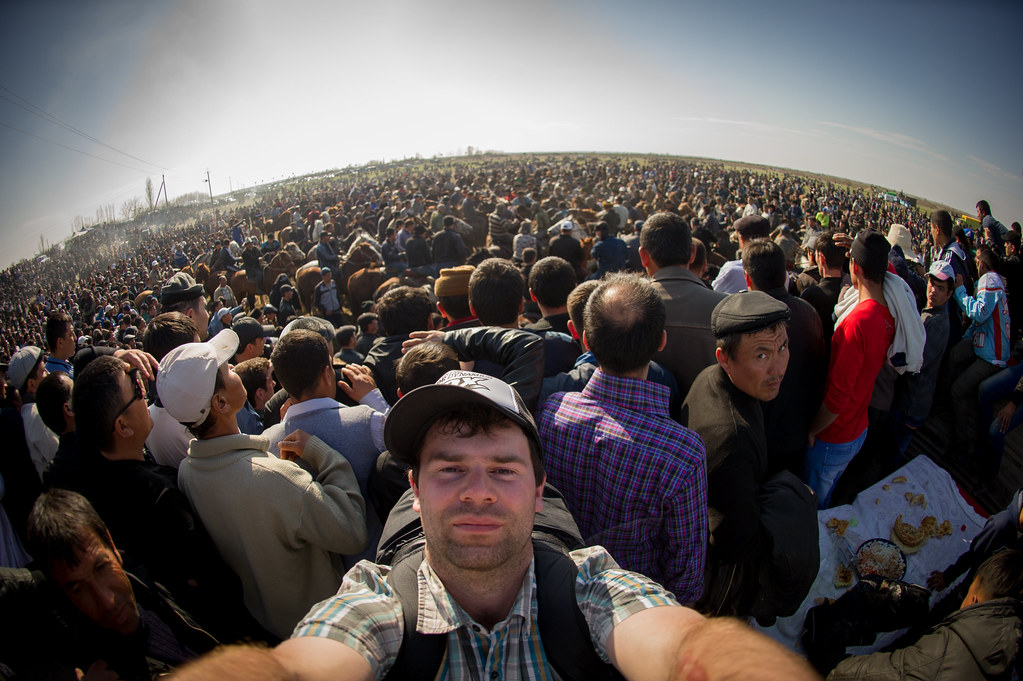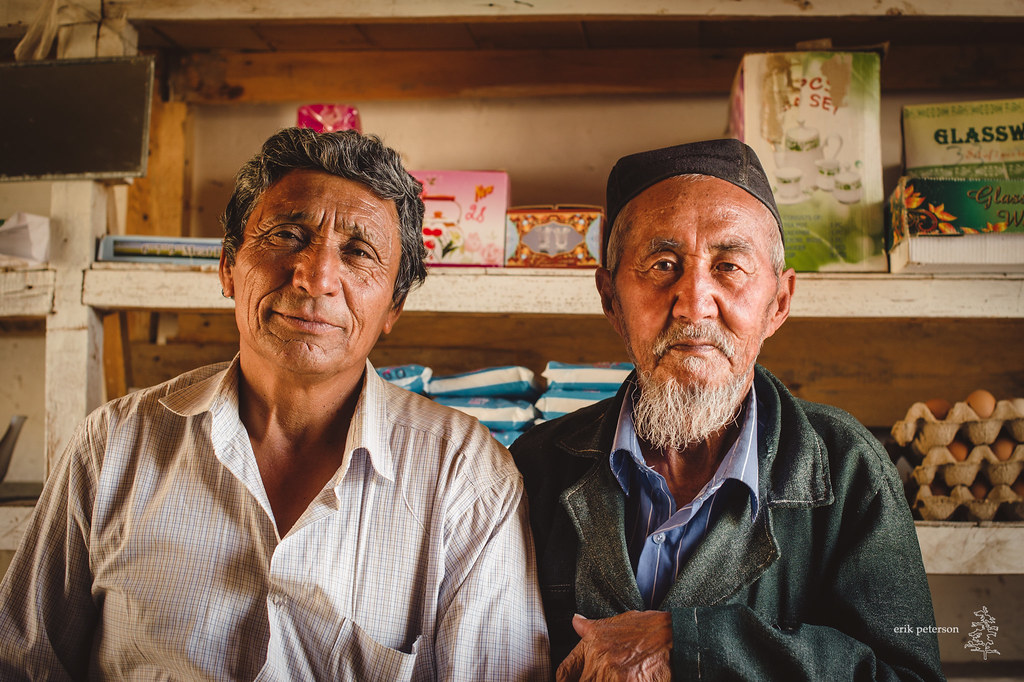Erik Peterson is a Canadian photographer living in Tashkent, Uzbekistan, where he’s been documenting Uzbek culture and traditions for the last few years. His photos capture unique moments of reunion and celebration, such as “Kopkari,” a national sport where the objective is for a rider to grab a beheaded goat and be the first of a large group of horsemen to throw it into a scoring circle .
Erik traveled to Uzbekistan to be with his wife, a teacher who had been working overseas for a long time. Before the couple’s move, Erik was doing freelance photography in Canada and shooting bike racing. He has now become a full-time teacher, though he hopes to transition away from teaching to photography in the long term: “I’ve always called myself a sport and adventure photographer. But a lot of my work is actually more geared toward travel and portraiture.”
Among all the interesting things Erik has had the chance to discover in Uzbekistan, he mentions Kopkari as the most notable: “Kopkari is definitely the coolest thing I’ve seen. The first time I went just to experience, but as I’ve returned, I’ve tried to make good photos.”
Kopkari competitions are held in a big field with two circles in the middle. The players are horsemen who fight for the carcass of a goat. In this middle-Asian sport, winners get a bigger prize for placing the goat in the smaller circle–roughly 20 to 40 inches in diameter–or a smaller prize for placing in the larger circle. They play until all the prizes have been won.
According to Erik, the players are talented horsemen who get the horses to run hard on the field: “It’s dangerous, but the horsemen do take care because the horses belong to them.” Riders wear helmets and carry whips as the competition gets tough, although he says he’s never seen any serious harm.
A tour agency took Erik to his first Kopkari game and he remembers the experience as a very special one. He says the place was “a field in the middle of nowhere,” an old stadium full of smoke, food and alcohol. But he’s been to many other matches since then, always treated as a VIP, and he can now affirm that unlike what he saw that very first time, official competitions turned out to have teams, rules and strategies. “It is a totally different sport, slower paced, with thousands of cops surrounding the stadium, very orderly. No booze, no snacks. You enter, watch, and leave.” His next objective is getting to ride a horse himself while taking pictures right on the field, something that he’s tried but failed to get permission for several times.
Besides taking photos of Kopkari, he documents the lives of Uzbek people through beautiful portraits and photos of landscapes. He says Uzbeks are very welcoming people and a nation very excited about their culture, as we can appreciate in some of his photos:
“I used to just want to make a cool photo that was well composed and well exposed. But now I’ve been here for three and a half years, and it’s been my home. There’s this ancient and rich history, and they’ve conquered so much, and have been so misunderstood,” he says when asked about the purpose of his photos. “If somehow I can share a glimpse or a view into their world for people, that’s great. Their culture pretty much gets ignored in the world.”
Erik plans to return to Canada for some time this summer, but he will keep up the good work, so be sure to check out his photostream and share your views with him!







